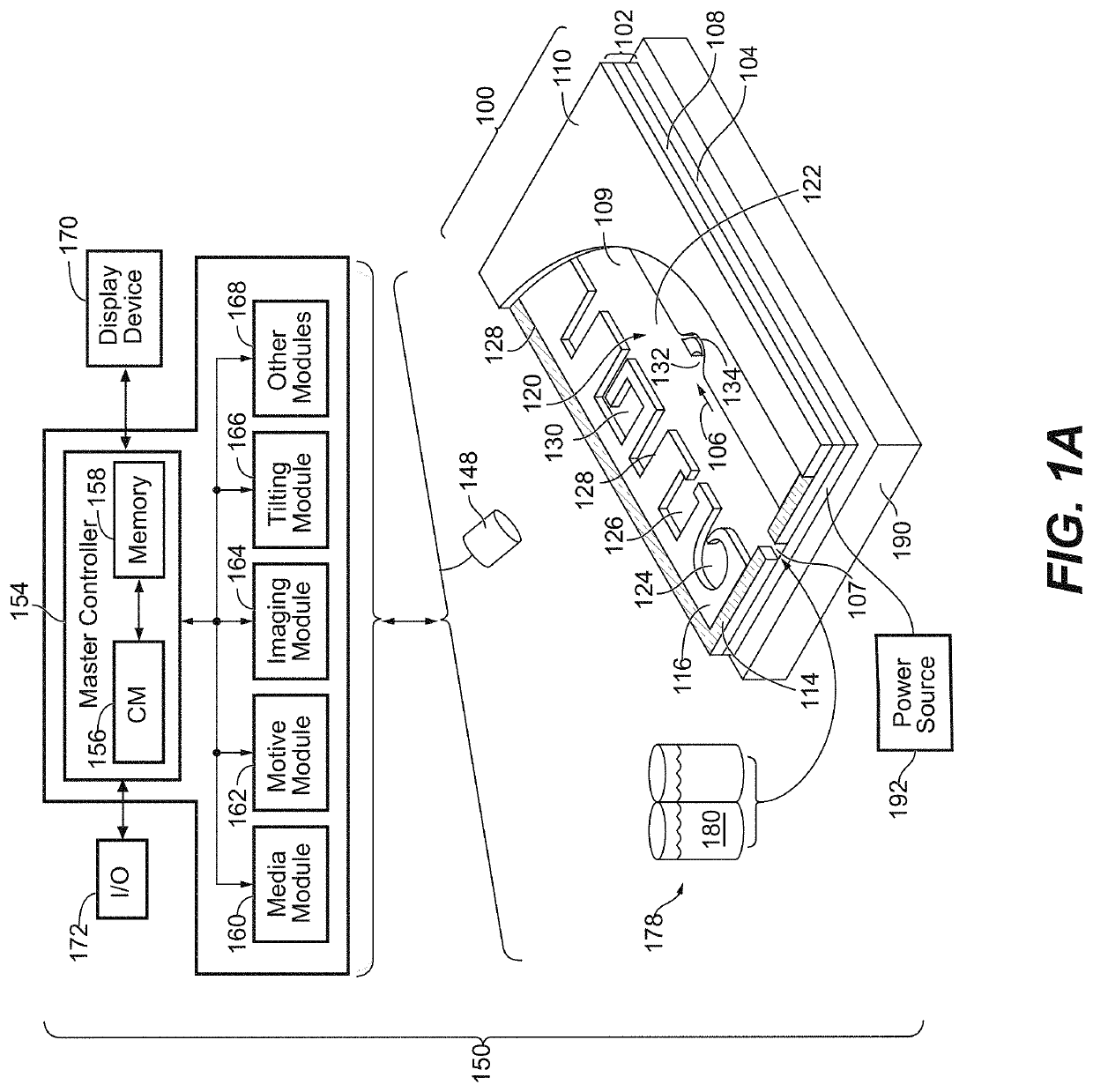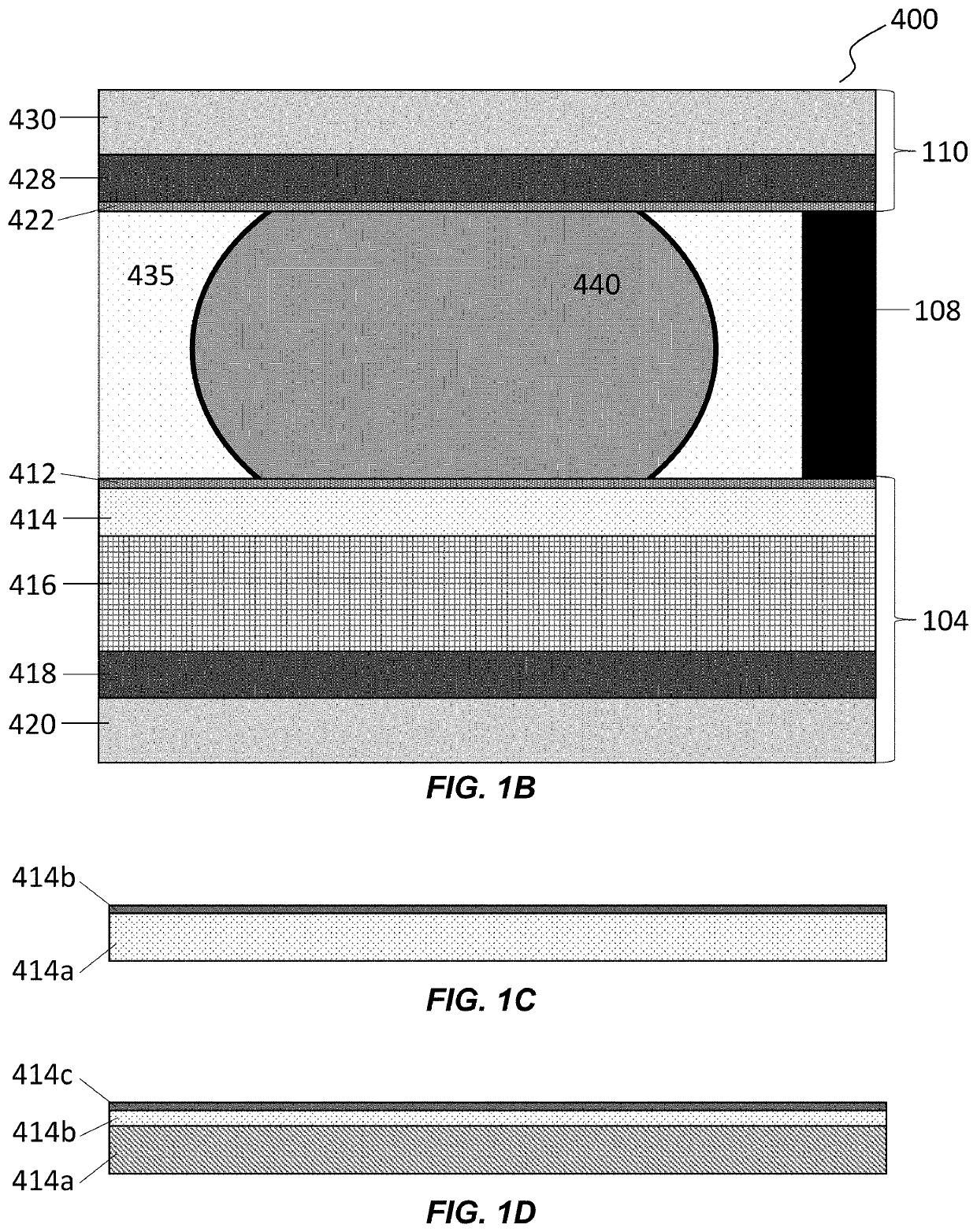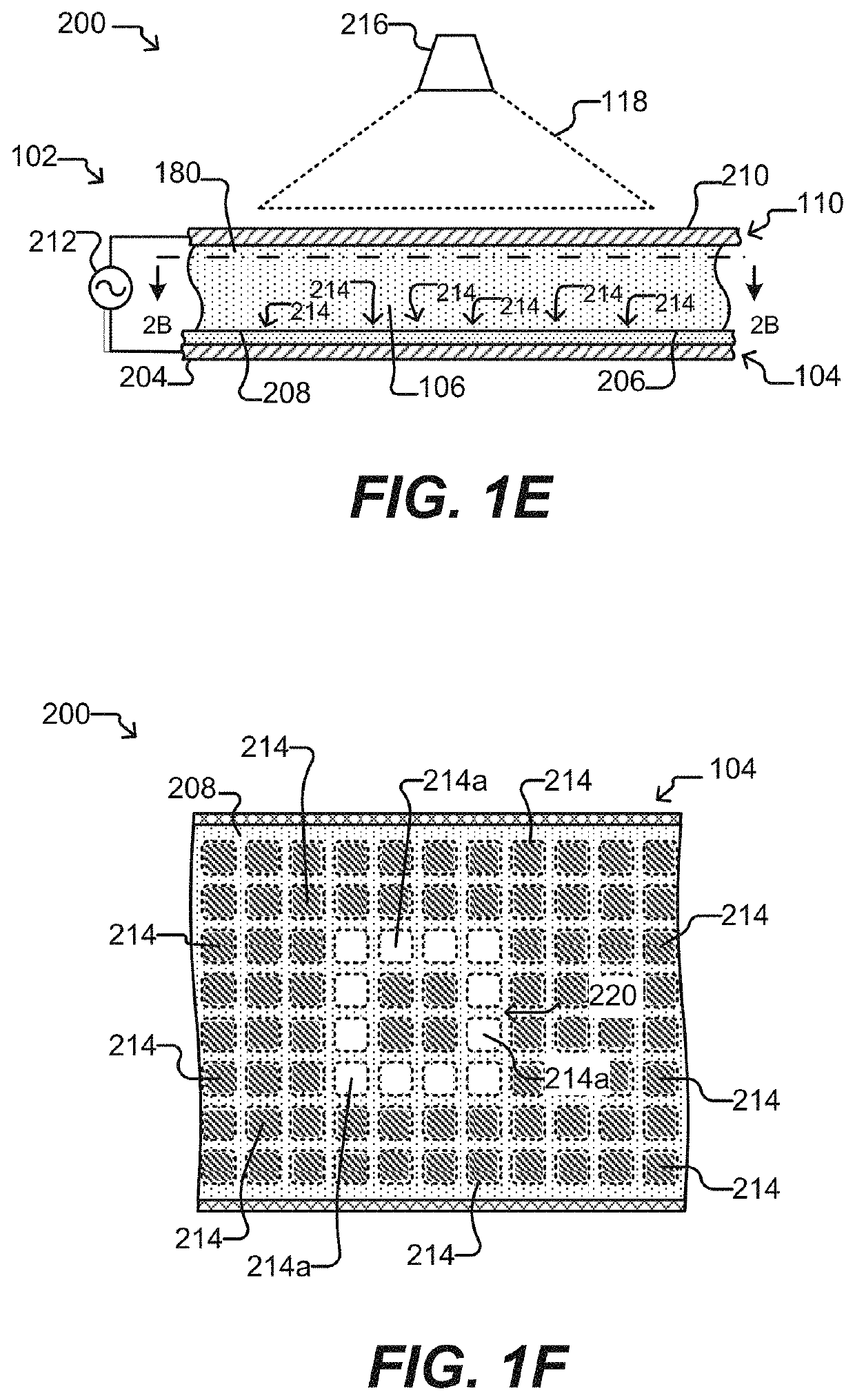Biological Process Systems and Methods Using Microfluidic Apparatus Having an Optimized Electrowetting Surface
a microfluidic apparatus and microfluidic technology, applied in fluid controllers, magnetic separation, laboratory glassware, etc., can solve the problems of inability to scale or implement additional functionality, limited nature of present electrowetting solutions, etc., to facilitate workflows, facilitate robust manipulation of droplets, and facilitate additional medical research applications
- Summary
- Abstract
- Description
- Claims
- Application Information
AI Technical Summary
Benefits of technology
Problems solved by technology
Method used
Image
Examples
example 1
A. Example 1
Preparation of an Electrowetting Microfluidic Device having Modified Interior Surfaces.
[0417]A microfluidic device (Berkeley Lights, Inc.) having a base that included an electrode activation substrate having a semiconductive layer of photosensitive silicon and a dielectric layer having an upper surface of alumina, a cover having a glass support with an ITO electrode, and microfluidic circuit material of photopatterned silicone separating the base and the cover, was treated in an oxygen plasma cleaner (Nordson Asymtek) for 1 min, using 100W power, 240 mTorr pressure and 440 sccm oxygen flow rate. The plasma-treated microfluidic device was treated in a vacuum reactor with trimethoxy (3, 3, 4, 4, 5, 5, 6, 6, 7, 7, 8, 8, 9, 9, 10, 10, 11, 11, 12, 12, 13, 13, 14, 14, 15, 15, 16, 16, 16)-nonaicosafluorohexadecyl)silane (0.3g, details of synthesis as described in WO 2017 / 205830, published Nov. 30, 2017) in a foil boat in the bottom of the vacuum reactor in the presence of magne...
example 2
B. Example 2
DNA Sequencing Library Preparation
[0419]FIG. 11 shows an exemplary workflow for providing a nucleic acid sequencing library, which may be obtained from either RNA or DNA. The ability to generate precisely sized droplets within the system is useful to the methods herein, as shown in FIG. 7D.
[0420]Culture Cells on Chip (FIG. 11, optional step 1110)
[0421]A microfluidic device (chip) including a first section that has an electrowetting (EW) configuration and a second section that includes a dielectrophoresis (DEP) configuration can be used to culture cells. Alternatively, two separate chips may be provided such that a DEP chip is connected to an EW chip (e.g., by an export / import tube). Cells are cultured in sequestration pens in the DEP section of the chip (or DEP chip), as described in e.g., WO 2016 / 141343. Cultured cells can be assayed in their sequestration pens to identify cells of interest, as described, e.g., in PCT / US2014 / 061837, published as WO 2015 / 061497; PCT / US20...
example 2-b
D. Example 2-B
Barcoding and Tailing
[0455]Each adapter can include a unique barcode and / or a target sequence for amplification. Combinations of barcodes can be used with different samples so that each sample is uniquely labeled. As shown in FIG. 15, the amplification step uses primers 1520 and 1515 comprising adapters 1520a and 1515c, barcodes (also known as indexes) 1520b and 1515b, and 3′ ends 1520c and 1515a that anneal to the insert DNA 1510. The PCR step thus adds index adapter sequences on both ends of the DNA, resulting in product 1530.
[0456]A combination of barcodes was used as follows: with one of Barcode 1, 2, or 3 on one side and one of Barcode 4, 5, 6, or 7 on the other side, a total of 12 distinct combinations of barcodes could be provided. As shown in FIG. 16, droplets having either nucleic acid fragments or adapters are staged within corresponding sequestration pens for use in a method of amplifying and / or barcoding nucleic acids. For example, droplets comprising prime...
PUM
| Property | Measurement | Unit |
|---|---|---|
| thickness | aaaaa | aaaaa |
| molecular weight | aaaaa | aaaaa |
| temperature | aaaaa | aaaaa |
Abstract
Description
Claims
Application Information
 Login to View More
Login to View More - R&D
- Intellectual Property
- Life Sciences
- Materials
- Tech Scout
- Unparalleled Data Quality
- Higher Quality Content
- 60% Fewer Hallucinations
Browse by: Latest US Patents, China's latest patents, Technical Efficacy Thesaurus, Application Domain, Technology Topic, Popular Technical Reports.
© 2025 PatSnap. All rights reserved.Legal|Privacy policy|Modern Slavery Act Transparency Statement|Sitemap|About US| Contact US: help@patsnap.com



